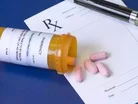Psychiatric Drug Events Lead to Nearly 90,000 Visits to Emergency Department

A new study appearing in JAMA Psychiatry found that an estimated 267,000 patients visited an emergency department between 2009 and 2011 because of adverse psychiatric drug events such as excessive sleepiness, head injuries, and overdose associated with use of psychiatric prescriptions.
Of those visits, over 19 percent resulted in hospitalization.
Researchers reinforced the need for more judicious prescribing of psychiatric drugs along with the continued surveillance of outcomes associated with their use.
“These drugs can be of benefit to people, but they should really be used with caution,” said lead study author Dr. Lee Hampton of the Division of Healthcare Quality Promotion with the Centers for Disease Control and Prevention. “Whatever healthcare facilities can do to encourage alternative treatments is helpful.”
The study found that approximately 89,094 adult patients visited an emergency department (ED) each year and about 30,707 annual visits to an ED were for patients taking sedatives or anxiety drugs.
The most common adverse effects reported in the study were movement disorders and loss of muscle control among the 21,578 estimated annual adverse event-related ED visits for antipsychotic medication use.
Antipsychotics and antidepressants were the leading causes of visits among adult patients between ages 19 and 44, however sedatives and anxiety drugs were implicated in 38 percent of the visits for patients between ages 45 and 64 and 55 percent of the ED visits among patients 65 and older.
Frequently-used sedative zolpidem tartrate (the active ingredient in Sanofi's Ambien) was involved in 11.5 percent of all adult psychiatric medication ED visits and 21 percent of visits involving adults 65 years and older, higher than any other psychiatric medication, the study concluded.
“We didn’t expect any one sedative to stand out that much,” said Hampton.
Data from the National Electronic Injury Surveillance System, Cooperative Adverse Drug Event Surveillance System, the National Ambulatory Medical Care Survey and the National Hospital Ambulatory Medical Care Survey was used by researchers from the CDC and the Johns Hopkins University schools of Medicine and of Public Health to generate the findings.
- Vaccines, Dementia & Food: The Week's Top Healthcare StoriesMedical Devices & Pharma
- Stanford: A Shingles Vaccine Could Cut Dementia Risk by 20%Medical Devices & Pharma
- What Does Eli Lilly’s US$3bn Dutch Pharma Investment Mean?Procurement & Supply Chain
- Supplies & Scope 3: This Week's Top 5 Stories in HealthcareProcurement & Supply Chain



